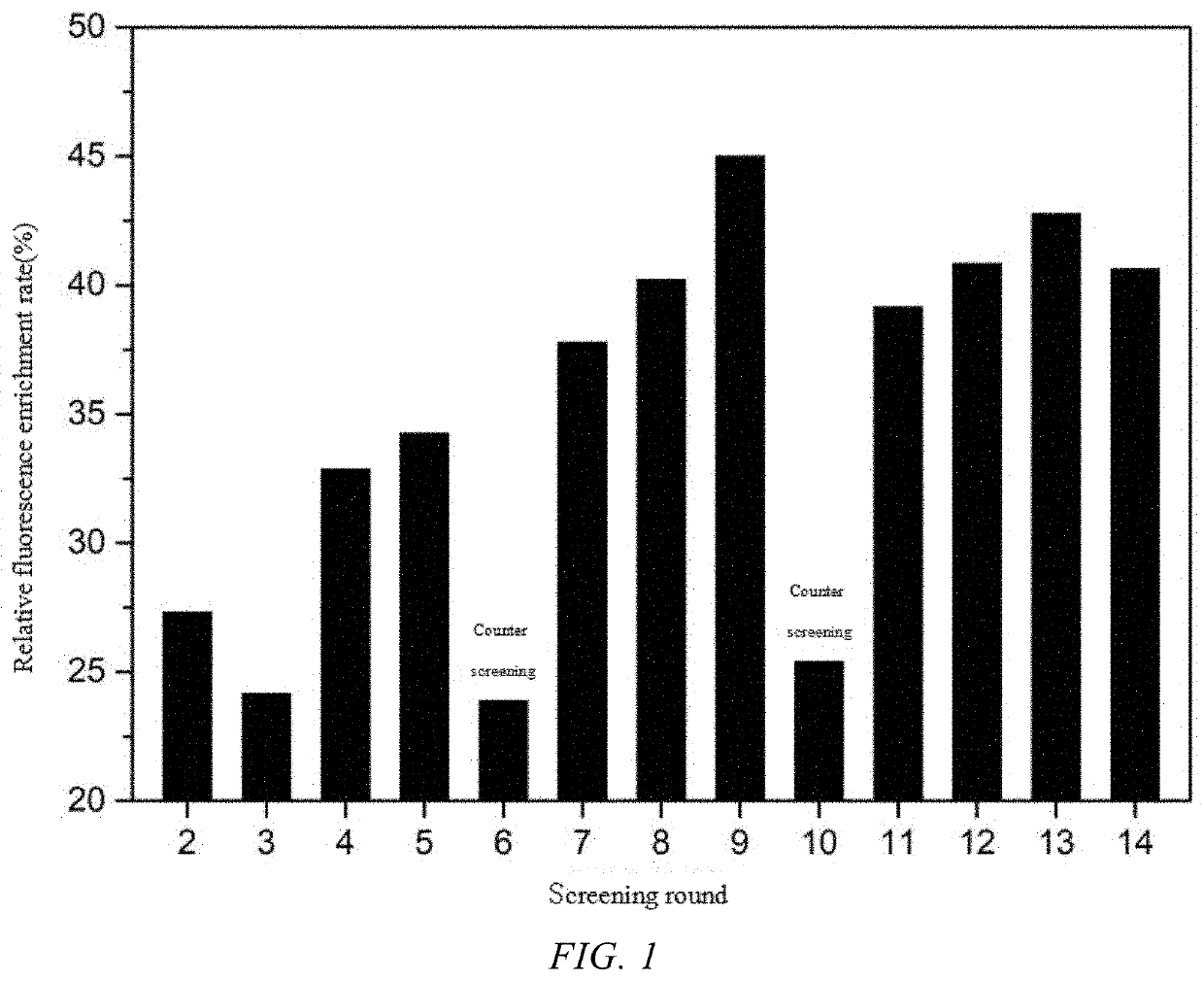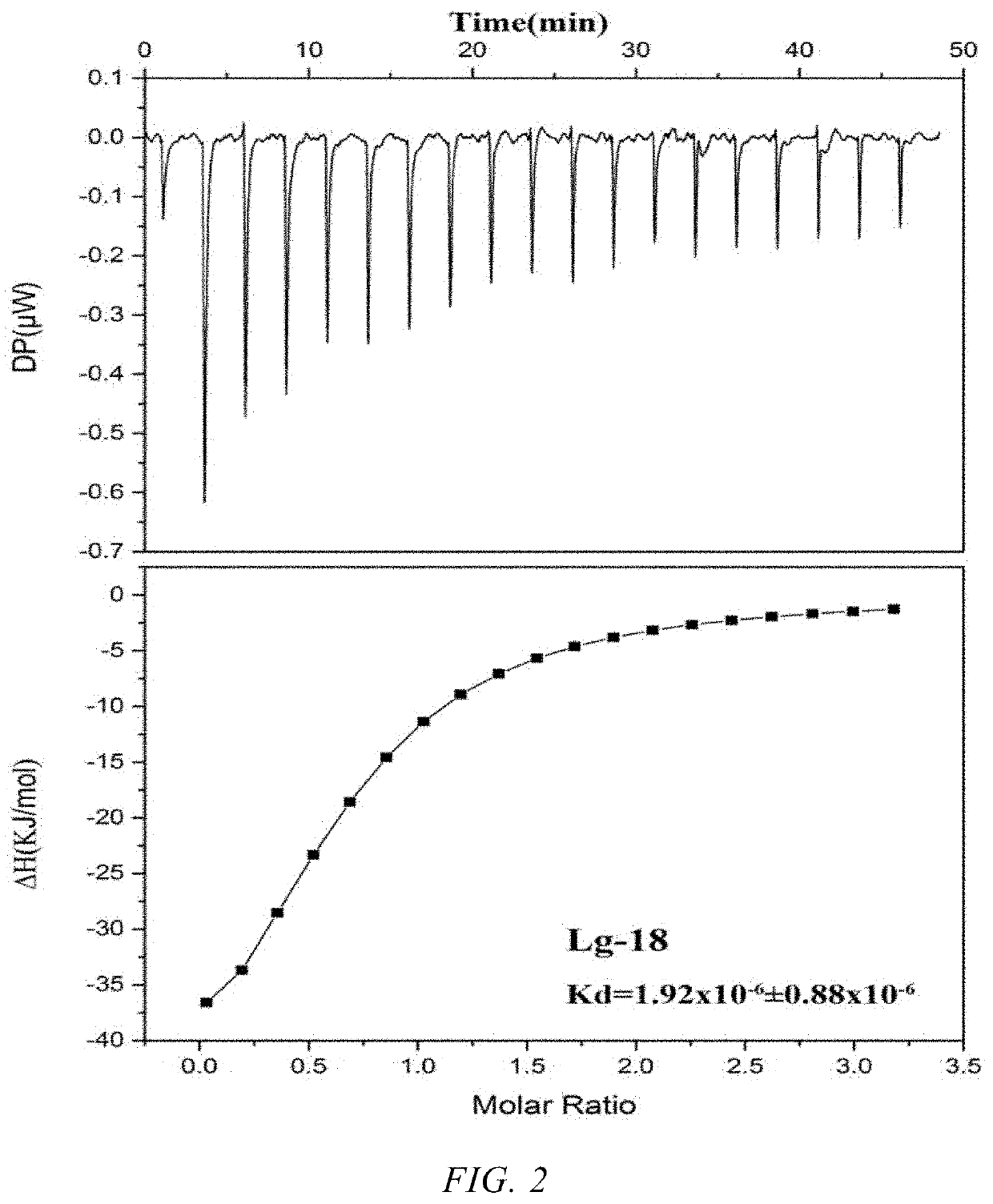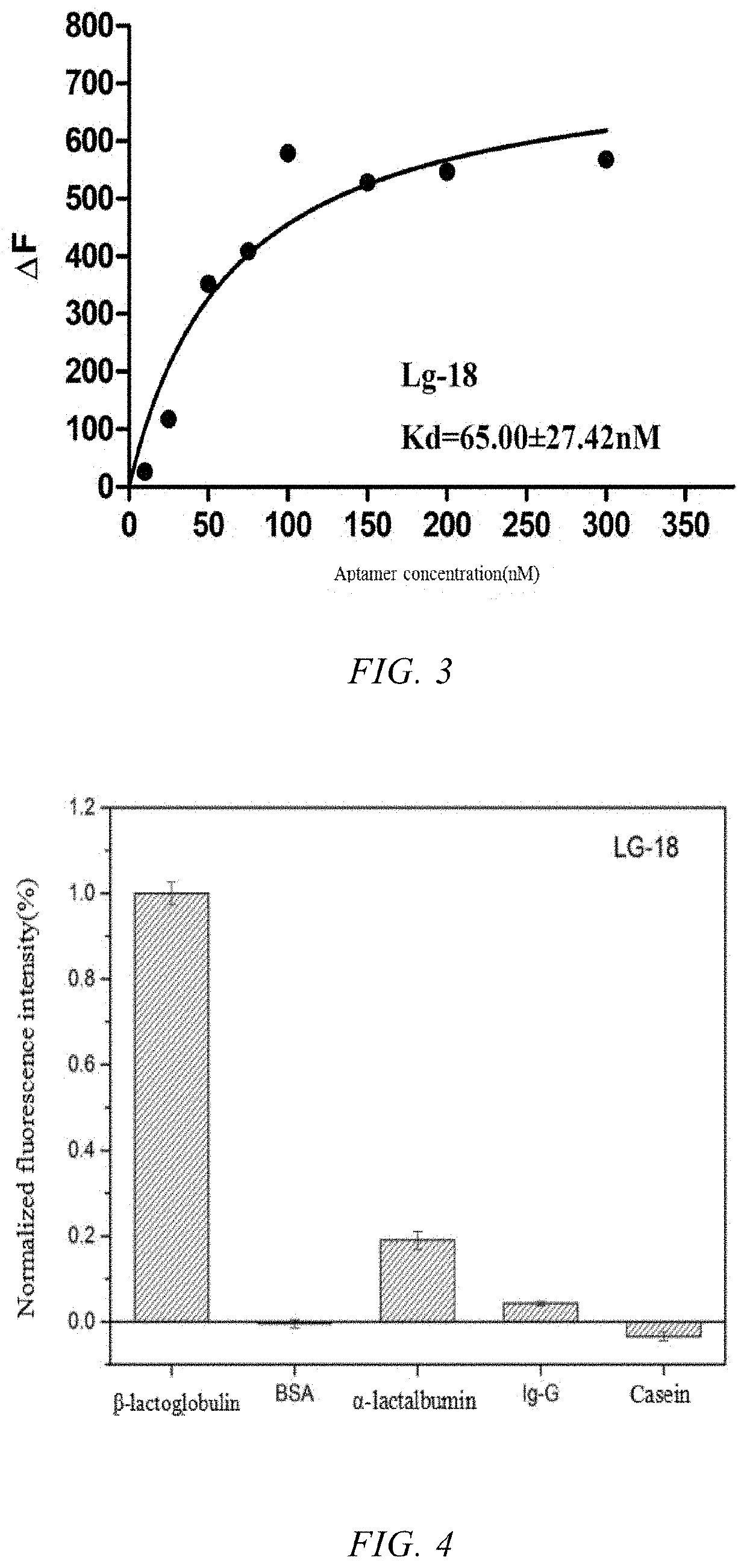Nucleic acid aptamer specifically recognizing b-lactoglobulin and use thereof
- Summary
- Abstract
- Description
- Claims
- Application Information
AI Technical Summary
Benefits of technology
Problems solved by technology
Method used
Image
Examples
example 1
Design and Synthesis of Large Single-Stranded Oligonucleotide Library and Primers
[0038]A library of single-stranded oligonucleotides with a length of 80 nt having a library size of up to 1012-1024 was constructed, where the single-stranded oligonucleotide has a random sequence region of 40 nt in the middle (determining the richness of the library) and a constant sequence region of 20 nt at both ends (a sequence necessary for primer binding). Sequence: 5′-AGCAGCACAGAGGTCAGATG-40 random base -CCTATGCGTGCTACCGTGAA-3′, synthesized by Dalian TaKaRa Bio Co., Ltd.
Forward primer:5′-FAM-AGCAGCACAGAGGTCAGATG-3′Reverse primer:5′-P-TTCACGGTAGCACGCATAGG-3′Biotinylated complementary short chain:5′-Biotin-AGCACGCATAGG-3′
[0039]The primers were synthesized by Sangon Biotech (Shanghai) Co., Ltd.
[0040]The single-stranded oligonucleotide library and primers were all prepared with TE buffer into 100 μM stock solutions and stored at 31 20° C. for later use.
example 2
Screening of Aptamer Binding Allergen β-lactoglobulin Based on Capture-SELEX Technology
[0041]First, the single-stranded oligonucleotide library was hybridized with the biotinylated complementary short chain, then immobilized on streptavidin-coupled magnetic beads and co-incubated with the allergen β-lactoglobulin. Single-stranded nucleic acid fell off from the magnetic beads due to the interaction with β-lactoglobulin and were released into the solution. After incubation, the supernatant was used as a template of a secondary library for PCR amplification. The amplified product was enzymatically digested, to produce single strands, which were precipitated in ethanol to obtain the secondary library for the next round of screening. The specific steps were as follows.
[0042]Hybridization of single-stranded oligonucleotide library with biotinylated complementary short chain: The ssDNA library was mixed with the biotinylated complementary short chain at a ratio of 1:1.5 (where the amount o...
example 3
Affinity and Specificity Analysis
(1) Affinity Analysis Based on Isothermal Titration Calorimetry (ITC)
[0048]PEAQ-ITC (Malvern Instruments Co., Ltd.) was used to analyze the binding ability of 10 candidate sequences. 300 μL of β-lactoglobulin solution (6 μM) was injected into the sample cell, and 38 μL of the candidate sequence solution (100 μM) was taken by the injection needle. The program was set such that the volume of the initial first drop titrated by the injection needle was 0.4 μL (to avoid the reaction of the sample in the top of the injection needle with the sample in the sample cell to affect the final result). Then 18 drops were injected and each drop was 2 μL, with an interval of 150 s. The rotation speed of the injection needle was 750 rpm to ensure sufficient reaction upon each injection. At the same time, the dilution heat caused by the titration of the buffer into the β-lactoglobulin solution was eliminated. The binding force and thermodynamic parameters in the bindi...
PUM
 Login to View More
Login to View More Abstract
Description
Claims
Application Information
 Login to View More
Login to View More - R&D
- Intellectual Property
- Life Sciences
- Materials
- Tech Scout
- Unparalleled Data Quality
- Higher Quality Content
- 60% Fewer Hallucinations
Browse by: Latest US Patents, China's latest patents, Technical Efficacy Thesaurus, Application Domain, Technology Topic, Popular Technical Reports.
© 2025 PatSnap. All rights reserved.Legal|Privacy policy|Modern Slavery Act Transparency Statement|Sitemap|About US| Contact US: help@patsnap.com



